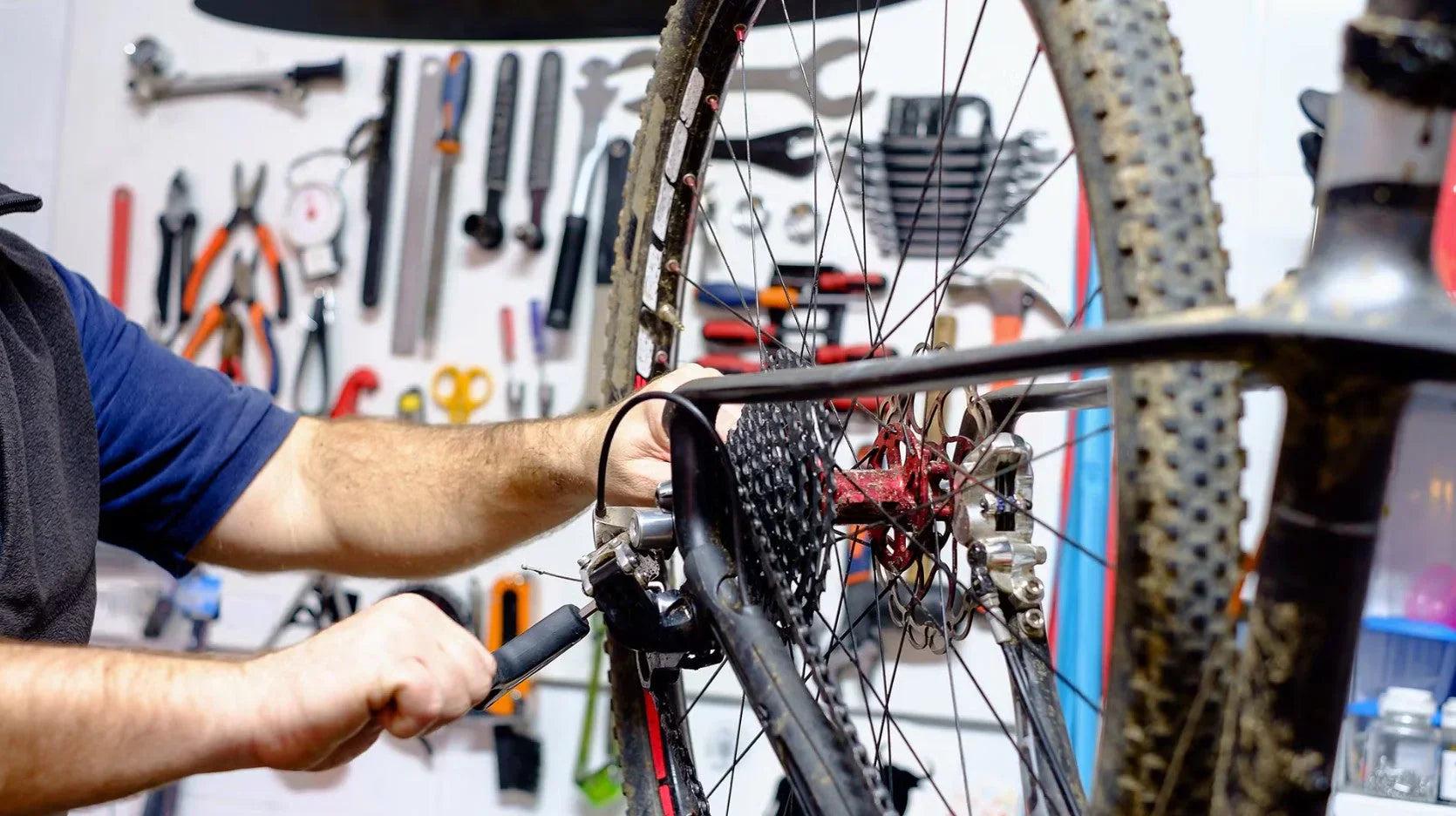Cruiser bikes are known for their comfort, relaxed riding style, and timeless retro-inspired looks. With wide tires, upright seating positions, and sturdy frames, these bikes are perfect for leisurely rides along the beach, city streets, or scenic trails. But no matter how durable they are, cruiser bikes still require regular care and attention.
If you’re a proud owner of a beach cruiser or a stretch chopper cruiser, you’ll want your bike to remain safe, smooth, and stylish for years to come. This comprehensive guide covers everything you need to know about maintaining your cruiser bike, from cleaning and protection to brake checks and seasonal storage.
1.Why Proper Maintenance Matters
Proper cruiser bike maintenance is essential for three key reasons: safety, performance, and longevity.
1. Extends Bike Life – Regular care prevents rust, wear, and premature part replacement. A bike that’s cared for can last for decades.
2. Keeps You Safe – Reliable brakes, well-inflated tires, and a properly lubricated chain help prevent accidents.
3. Preserves Comfort – Cruiser bikes are designed for leisure. If your saddle is loose or handlebars misaligned, you lose the comfort they’re known for.
4. Saves Money – Addressing small issues early prevents costly repairs later. A quick chain lubrication costs far less than replacing a worn drivetrain.
In short, maintaining your cruiser bike isn’t just optional—it’s an investment in your cycling experience.
2.Regular Cleaning and Protection
Cruiser bikes, especially beach cruisers, face unique challenges. Sand, saltwater, and humidity can cause rust and mechanical problems if not addressed.
Cleaning Routine
- Rinse Gently – Avoid high-pressure hoses that can force water into bearings and joints. Use a bucket of warm water instead.
- Mild Soap & Brush – Scrub the frame, rims, pedals, and chain with a soft brush. Focus on areas where dirt and salt build up.
- Rinse & Dry – Rinse with clean water and wipe thoroughly with a microfiber cloth.
Protection Tips
- Wax the Frame – Applying car wax or bike polish creates a protective barrier against moisture.
- Anti-Rust Spray – Use a light coating on bolts, nuts, and exposed metal parts.
- Battery Care for E-Cruisers – For electric cruiser bikes, clean the battery contacts with a dry cloth and avoid moisture exposure.
- Cover Your Bike – If you must park outdoors, use a waterproof cover to protect against rain and UV damage.
Pro Tip: After a beach ride, always rinse your cruiser to remove salt and sand. Even stainless-steel parts can corrode over time.
3.Tire and Wheel Maintenance
Cruiser bikes often come with fat tires that add comfort and stability, but they need regular attention.
Tire Care
- Check Pressure Weekly – Most cruiser tires should be inflated to 30–50 PSI, depending on rider weight and terrain.
- Look for Cracks – Sun exposure can dry out rubber, leading to sidewall cracks. Replace aging tires before they fail.
- Rotate Tires – If you ride often, rotate front and rear tires to ensure even wear.
Wheel Care
- Check for Wobble – Lift the bike, spin the wheels, and check if they move straight. A wobbling wheel needs truing at a bike shop.
- Tighten Spokes – Loose spokes reduce strength and stability. Test by squeezing pairs of spokes. If they feel slack, tighten them or get a mechanic’s help.
- Clean Rims – Dirt buildup can affect braking, especially if you use rim brakes.
Healthy tires and wheels mean smoother rides and fewer flats.
4.Chain and Drivetrain Care
The drivetrain is the heart of your cruiser bike. Even though many cruisers are single-speed, the chain still needs attention.
Step-by-Step Care
1. Wipe the Chain – After each ride, especially on sandy paths, use a dry rag to wipe dirt off the chain.
2. Degrease – Once a month, apply a chain degreaser and scrub with a chain-cleaning brush.
3. Lubricate – Apply a few drops of bike-specific lube. Wipe excess oil to avoid attracting dirt.
4. Inspect for Stretch – Over time, chains elongate. If your pedals feel “slippery” or gears skip, replace the chain.
Extra Drivetrain Tips
- Multi-speed cruisers with Shimano gears need extra care. Keep derailleurs clean and cables lubricated.
- For electric cruiser bikes, check the motor hub and ensure wiring connections stay free of dirt.
Pro Tip: Avoid using WD-40 as a lubricant—it’s good for cleaning but not long-term chain protection.
5.Brake and Safety System Checks
Brakes are your most important safety feature. Cruiser bikes may have coaster brakes (pedal backward to stop), rim brakes, or modern disc brakes.
Maintenance Checklist
- Brake Pads – Inspect pads monthly. Replace if they’re thin or glazed.
- Brake Levers – Ensure levers return smoothly when released.
- Brake Cables – Look for fraying or rust. Lubricate with cable oil.
- Disc Brakes – Wipe rotors with isopropyl alcohol to remove oil and dirt.
Test your brakes before every ride. If stopping distance feels long, fix the issue immediately.
6.Saddle, Handlebar, and Comfort Adjustments
Comfort is the hallmark of cruiser bikes. Poor adjustments can turn a smooth ride into back or knee pain.
Saddle Adjustment
- Height – Set so your leg is almost straight at the lowest pedal point.
- Angle – Keep the saddle level. Tilted saddles cause sliding and discomfort.
- Position – Adjust forward/backward for proper knee alignment.
Handlebar Adjustment
- Height – Your arms should bend slightly, avoiding overstretch.
- Tightness – Check that handlebars don’t twist when you apply pressure.
- Style Fit – High-rise handlebars are great for upright comfort, while flat bars offer more control.
Pro Tip: A properly adjusted cruiser bike should feel like sitting in a lounge chair—relaxed, upright, and easy on the joints.
Further Reading: Bike Accessories You Didn’t Know You Needed
7.Seasonal and Long-Term Storage Tips
Your cruiser bike’s performance also depends on how you store it.
Winter Storage
- Clean the bike thoroughly before storage.
- Store indoors, away from freezing temperatures.
- Deflate tires slightly to prevent cracking.
- For e-cruisers, remove the battery and store it at room temperature, half-charged.
Outdoor Storage
- Always use a waterproof cover.
- Keep the bike off damp ground.
- Lock the bike securely to prevent theft.
Long-Term Storage
- Hang the bike, if possible, to reduce tire stress.
- Lubricate the chain before storage.
- Avoid direct sunlight, which can damage paint and rubber.
8.When to Seek Professional Help
Even with regular DIY maintenance, professional servicing ensures your cruiser bike stays in top condition.
When to Visit a Mechanic
- Annual Tune-Up – Comprehensive checks of bearings, drivetrain, and wheels.
- Strange Noises – Clicking or grinding may signal hidden issues.
- After a Fall – Even minor crashes can misalign wheels or handlebars.
Think of a professional tune-up as a health check-up for your cruiser bike.
Quick Troubleshooting Guide
Here are common issues and simple fixes:
|
Problem |
Likely Cause |
Solution |
|
Squeaky Brakes |
Dirty rims or rotors |
Clean with alcohol |
|
Slipping Chain |
Worn or stretched chain |
Replace chain |
|
Stiff Pedals |
Dry bottom bracket |
Lubricate or service |
|
Wobbling Wheel |
Loose spokes |
True wheel at shop |
|
Rust Spots |
Exposure to salt or water |
Sand lightly & apply anti-rust spray |
Conclusion
Cruiser bikes are built for comfort and leisure, but their performance and durability depend on regular care. By cleaning often, maintaining tires and chains, checking brakes, adjusting comfort settings, and storing properly, you’ll ensure your cruiser bike stays reliable for years.
Whether you ride a classic single-speed beach cruiser or a modern electric stretch bike, these maintenance tips and guidelines will keep your rides safe, smooth, and stylish.
So, take care of your cruiser—and it will reward you with countless carefree rides.
Further Reading: How to Choose the Perfect Bike for Your Riding Style
FAQs
Q1: How often should I clean my cruiser bike?
Once a month for casual riders, once a week if riding near sand or saltwater.
Q2: Do fat tire cruiser bikes need special care?
Yes. Check pressure more often and keep sand out of tread grooves.
Q3: Should I oil coaster brakes?
No. Coaster brakes are sealed. If they squeak, have a shop inspect them.
Q4: How long does a cruiser bike chain last?
About 1,500–2,000 miles with regular care. Less if exposed to sand and salt.



Share:
Step-Through vs Step-Over Bike Frames: A Complete Guide to Choosing the Right Style
How to Extend the Battery Life of Your E-Bike: 10 Proven Tips for Long-Lasting Power